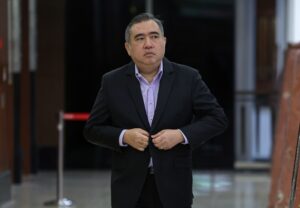KUALA LUMPUR, Nov 6 — Following is the transcript of Bernama’s email interview with Bank Negara Malaysia (BNM) Governor Datuk Seri Abdul Rasheed Ghaffour on the Overnight Policy Rate (OPR).
Q1. Can you guide us through the Monetary Policy Committee’s (MPC) decision on the OPR today?
Following our meeting, we have decided to maintain the OPR at 2.75 per cent. At its current level, the OPR remains appropriate and supportive of the economy amidst stable inflation.
Q2. Why did the MPC decide to maintain the OPR today? What does that say about where our economy is headed?
Our monetary policy decisions are grounded in the MPC’s assessment of the Malaysian economy, with careful consideration of risks to both the growth and inflation outlook.
Let’s first start with growth. Overall, the key drivers of our economy are strong and will keep supporting a steady growth path into 2026. The outlook remains positive, boosted by the MPC’s pre-emptive rate cut in July and measures from Budget 2026.
In 2026, resilient domestic demand will continue to support the Malaysian economy. We expect employment to remain steady and incomes to continue rising. This means that household spending should stay resilient. On top of that, fiscal initiatives—such as continued cash assistance through Sumbangan Asas Rahmah (SARA) and Sumbangan Tunai Rahmah (STR), along with the civil service salary restructuring under the Public Service Remuneration System (SSPA 2.0) — will provide households with more disposable income and help sustain consumption activity.
Investments will continue to play a key part in our growth story. The healthy investment activity we’ve seen this year is set to continue into next year.
Multi-year projects—both public and private—continue to move ahead, with many previously approved investments also being rolled out.
To put things into context, 85.1 per cent of manufacturing projects approved from 2021 to June 2025 have already been implemented. The recently announced Budget 2026’s focus on strategic areas such as artificial intelligence (AI), semiconductors, and the energy transition, alongside national masterplans and key initiatives (e.g. the New Industrial Master Plan 2030, National Semiconductor Strategy, New Investment Incentive Framework, and 13th Malaysia Plan), will further help support our investment momentum.
Indeed, we’re seeing early signs of local data centres beginning to export their services. This will support our imports and reinforce Malaysia’s position as a rising digital hub in the region.
The trade agreement signed by Malaysia and the United States at the recent ASEAN Summit helps clear up earlier uncertainty. Businesses and investors value a stable environment, so this supports our outlook going forward.
Nevertheless, tariffs are now generally higher, compared to the period before April 2 when the US announced its reciprocal tariff measures. And while there are still lingering trade uncertainties, the outlook for our exports remains supported by resilient global demand for electrical and electronics (E&E) products, especially with new opportunities in AI.
The Visit Malaysia 2026 campaign is also well-positioned to bring in more tourist arrivals and spending.
Together, these will help cushion our external sector even as global challenges continue.
Let me now turn my attention to inflation. From the start of this year until now, headline and core inflation averaged 1.4 per cent and 1.9 per cent, respectively.
Overall price increases in 2025 continued to stay manageable, even as domestic reforms—including the Sales and Service Tax expansion, changes in electricity tariffs, and RON95 subsidy rationalisation—were gradually introduced throughout the year.
This reflects their careful policy design and calibration to cushion the impact on most households whilst still delivering meaningful fiscal savings for the government.
Notably, the government’s September roll-out of the RON95 subsidy rationalisation, including the targeted way the changes were introduced, ensures its impact on inflation remains limited.
In fact, most Malaysians are benefiting from a small downward adjustment in retail fuel prices, which in turn helps cushion households from cost pressures, while keeping broader inflation dynamics contained.
Headline inflation is expected to stay moderate next year, thanks to easing global cost pressures. Lower global commodity prices should help keep domestic costs in check.
At the same time, core inflation is likely to remain stable and close to its long-term average, as the economy continues to grow steadily at a modest pace. In this environment, the impact of domestic policy reforms on inflation is expected to be limited.
Q3. As this is the final MPC meeting of the year, what are your reflections on 2025?
Year 2025 was a year marked by heightened uncertainty, shaped by global trade tensions and geopolitical developments.
The move by the US to raise import tariffs in April disrupted global trade and forced businesses and policymakers to respond and adapt quickly—which added to the sense of unpredictability.
With many trade deals now wrapped up, including Malaysia’s, there is better clarity in the outlook. Still, tariffs remain generally higher than before, and some trade-related uncertainties continue to persist.
The Malaysian economy stayed remarkably resilient in face of these challenges. Investments remained a bright spot for the economy and the government continued to carry out structural reforms to strengthen the country’s future.
Our resilience today is owed to the years of reforms carried out in the past, so this has been incredibly important work. This should only strengthen our resolve to pursue deeper reforms to secure a stronger future.
As always, we remained forward-looking and stayed vigilant against emerging risks, so the MPC could respond quickly as needed.
In view of external uncertainties, the MPC focused on maintaining a supportive environment for growth while inflation stayed moderate.
Our OPR cut in July was a pre-emptive decision to preserve Malaysia’s growth trajectory amidst price stability. We expect it to continue providing an additional lift to the economy for the rest of 2025 and into 2026.
Q4. What is your outlook for 2026 and what are the MPC’s key concerns and priorities for the year ahead?
Looking ahead to 2026, we expect the global environment to remain fluid, with many moving parts shaping economic conditions. We continue to keep a close watch over trade and geopolitical developments.
The full impact of higher tariffs is also likely to be felt more clearly in the year ahead, as trade flows adjust—not just for Malaysia, but for many economies around the world.
Despite this, Malaysia’s economy is expected to remain on a firm footing. Throughout the uncertainty, we will stay resilient.
Indeed, the Ministry of Finance has announced a gross domestic product growth forecast for 2026 of 4 per cent to 4.5 per cent.
This continued growth reflects the underlying resilience of our economy in face of external headwinds.
Our strong economic fundamentals will help us manage near-term pressures and to stay on track for the future.
Inflation will likely remain moderate, ensuring that price changes remain steady and predictable. This will create stable conditions for people and businesses to carry out economic activities with confidence.
In an environment shaped by elevated and prolonged uncertainty, it is important to be able to navigate and steer a clear path for the economy.
Using real-time data and direct feedback from businesses, banks, and industry groups, we aim to remain closely in tune with what’s happening on the ground whilst also staying ahead of emerging risks.
Above all, our commitment is to keep the Malaysian economy on course by keeping inflation low and stable in support of sustainable growth. — Bernama




